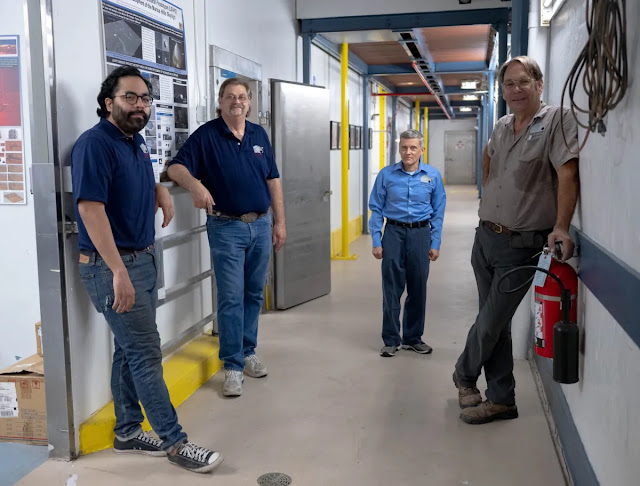By the late 2030s, NASA hopes to have an astronaut on Mars. But as a halfway point, it must first construct a lunar base. And it needs a landing pad in order to construct a lunar base. An architect for space is needed to construct a landing pad.
That's Sam Ximenes. His company, Astroport Space Technologies, is situated in San Antonio, and it recently received a second small business award from NASA to carry out joint research on the design of robots capable of building a lunar landing pad with UTSA.
"Technology has arrived," Ximenes declared. It's no longer Star Trek. It's not a dream. This is not fictitious.
Astroport was able to construct a furnace that could liquefy lunar dust and mold it into bricks like Legos thanks to its first contract with NASA last year. The goal of this most recent contract is to find a solution for a comparable issue: furnace feeding.
Astroport, a 2020-founded subsidiary of a bigger firm, is now pursuing ideas for autonomous, remote-controlled, or hybrid robots that might be used to collect and transfer moon dust—finely granulated lunar soil or regolith—to the furnace.
While there are other base-building applications for the bricks that are produced, the primary goal is to construct a landing pad. It is essential. Similar to how a landing helicopter blows grass, but at a significantly higher velocity, the surrounding soil is blasted into the air when a spacecraft lands or launches from the lunar surface.
According to Ximenes, "it's so energetic that the dust goes into orbit and forms a cloud orbiting the moon." "That puts incoming spacecraft in danger and causes havoc."
Aside from the potential to produce a persistent smokescreen, the burst of intense lunar dust may sandblast any existing machinery, including habitats and tractors, on the moon.
Astroport's research partner for this project is UTSA. The research is being led by professors Sazzad Bin-Shafique and Ibukun Awolusi, with graduate students also participating.
Awolusi stated in a prepared statement that the collaborative research on turning moon dust into building materials will present "remarkable opportunities... toward achieving space sustainability."
Expertise will also come from the University of Adelaide in Australia, which has a lunar simulation facility and a center for space research. Venturi Astrolab, a California-based aerospace business, will offer guidance on how to link the system to a robotic rover.
According to Ximenes, the recent surge in space research and exploration is the result of innovations made by for-profit businesses like Space X, which have reduced the price of orbit-to-orbit travel.
Ximenes predicted that a space economy would emerge because businesses are drawn to the potential for mining. "The journey to the lunar surface is the next step toward reaching Mars."
NASA awarded Astroport two contracts totaling $150,000, both of which were categorized as Phase 1 Small Business Technology Transfers. If those contracts are carried over to Phase 2, Ximenes stated, they rise to $800,000.

.webp)
